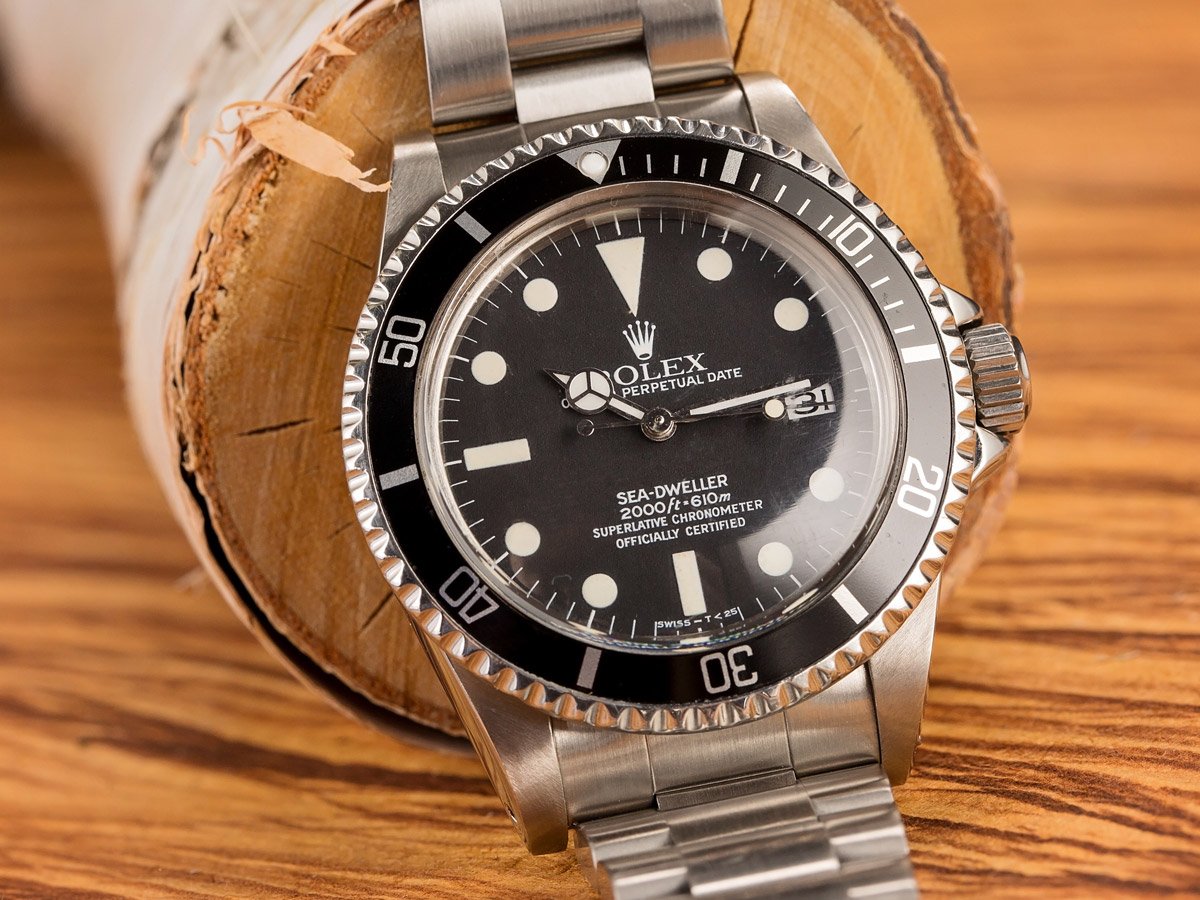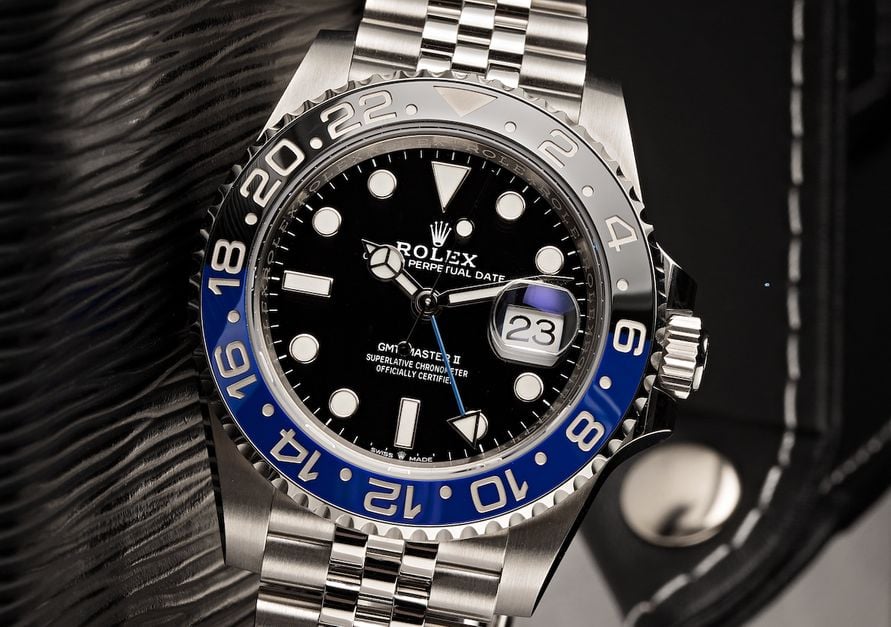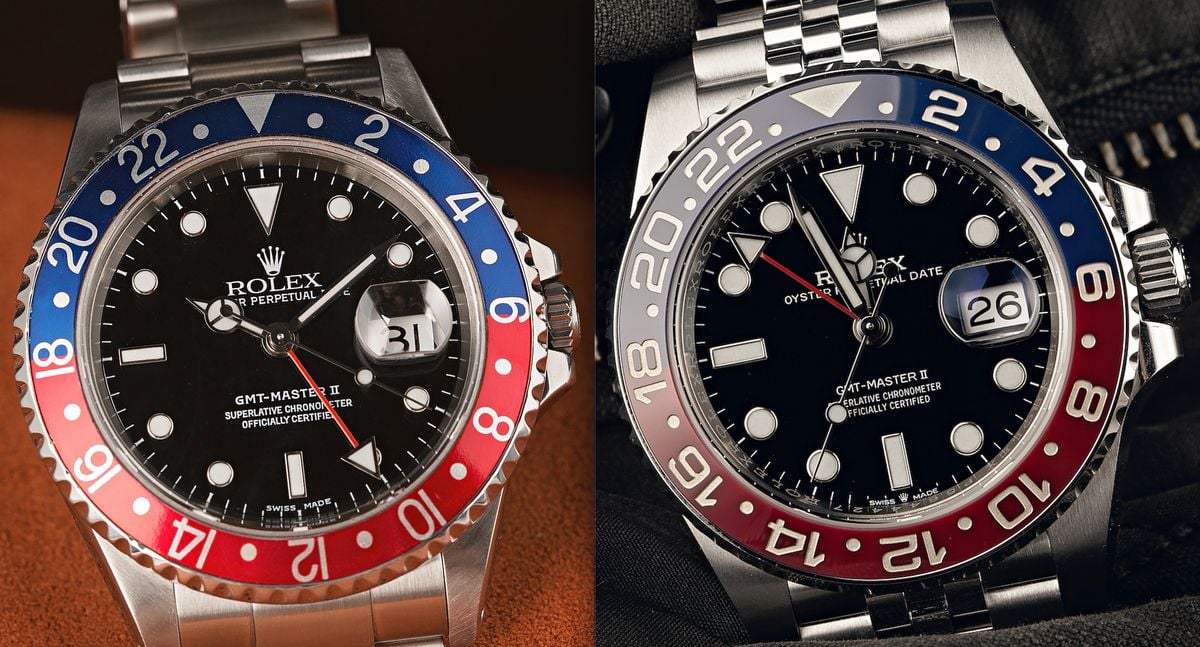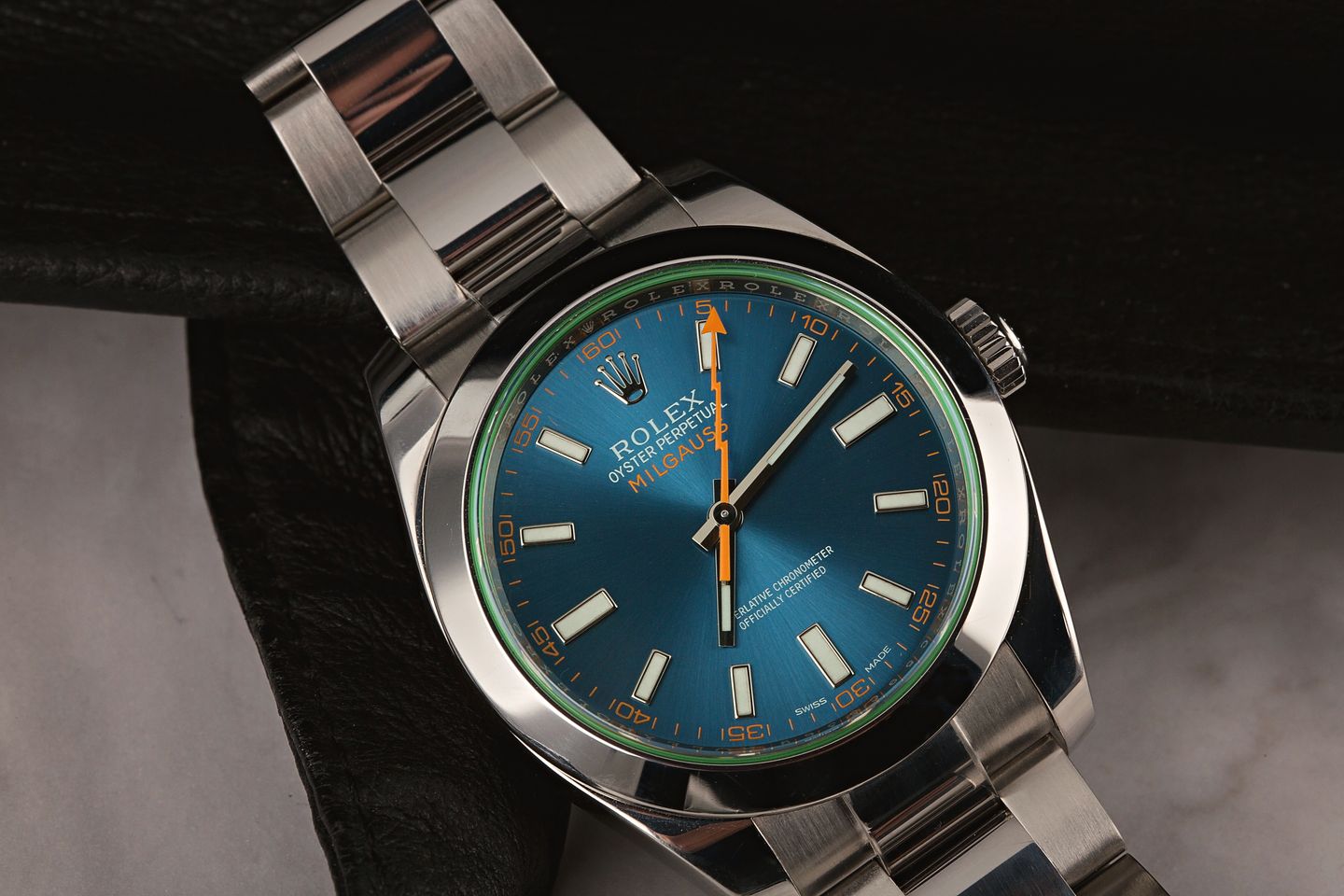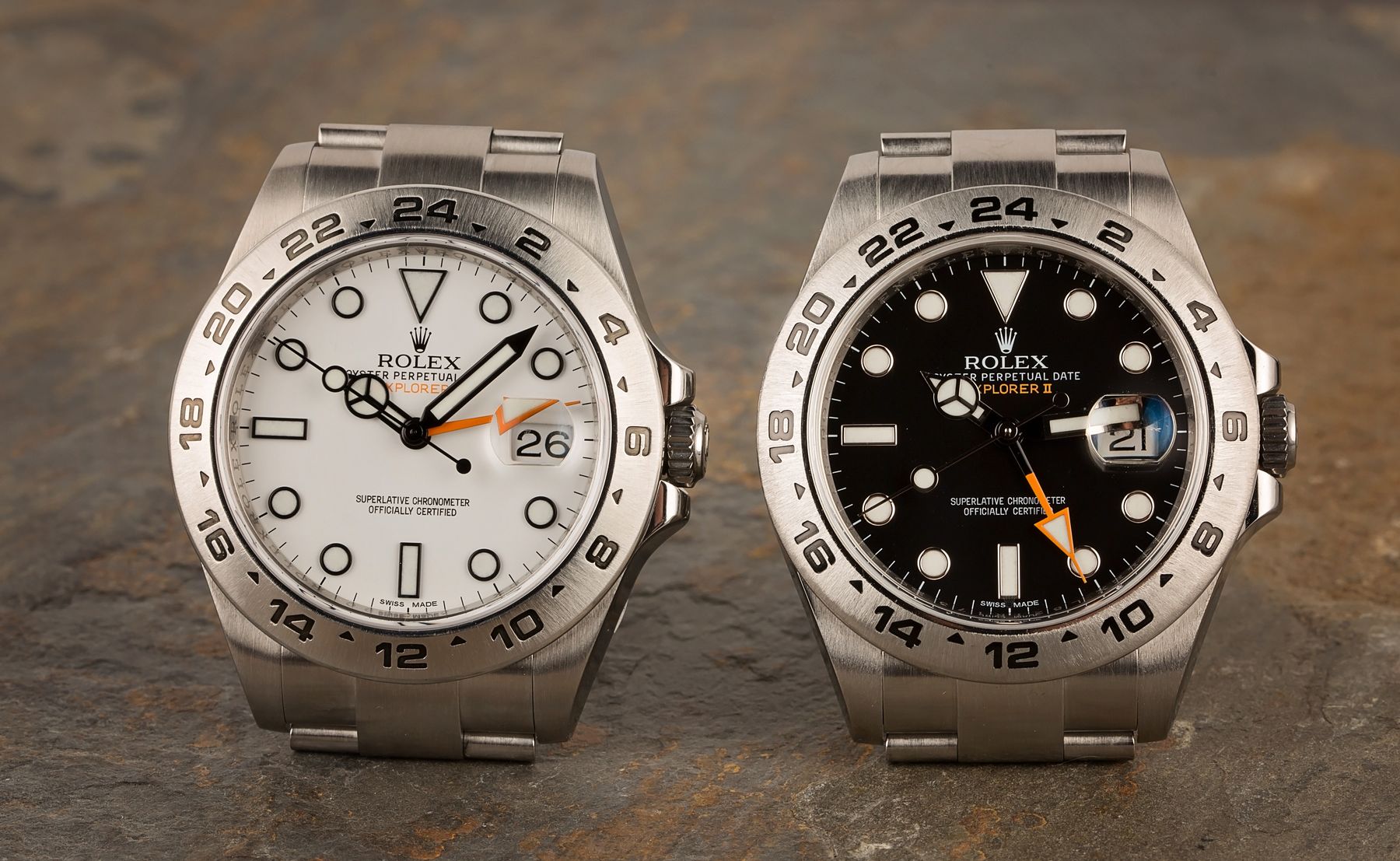Upon first glance, these watches look nearly identical. And that’s pretty much true, since both of these are Rolex Sea-Dweller ref. 1665 watches from the late 1970s and early 1980s. However, there is a unique difference between these two watches – and that lies on the dial. Here, we’re going to compare the Tritium and Rail dials on the ref. 1665, which are differentiated by just a few years and key details. Let’s take a closer look!
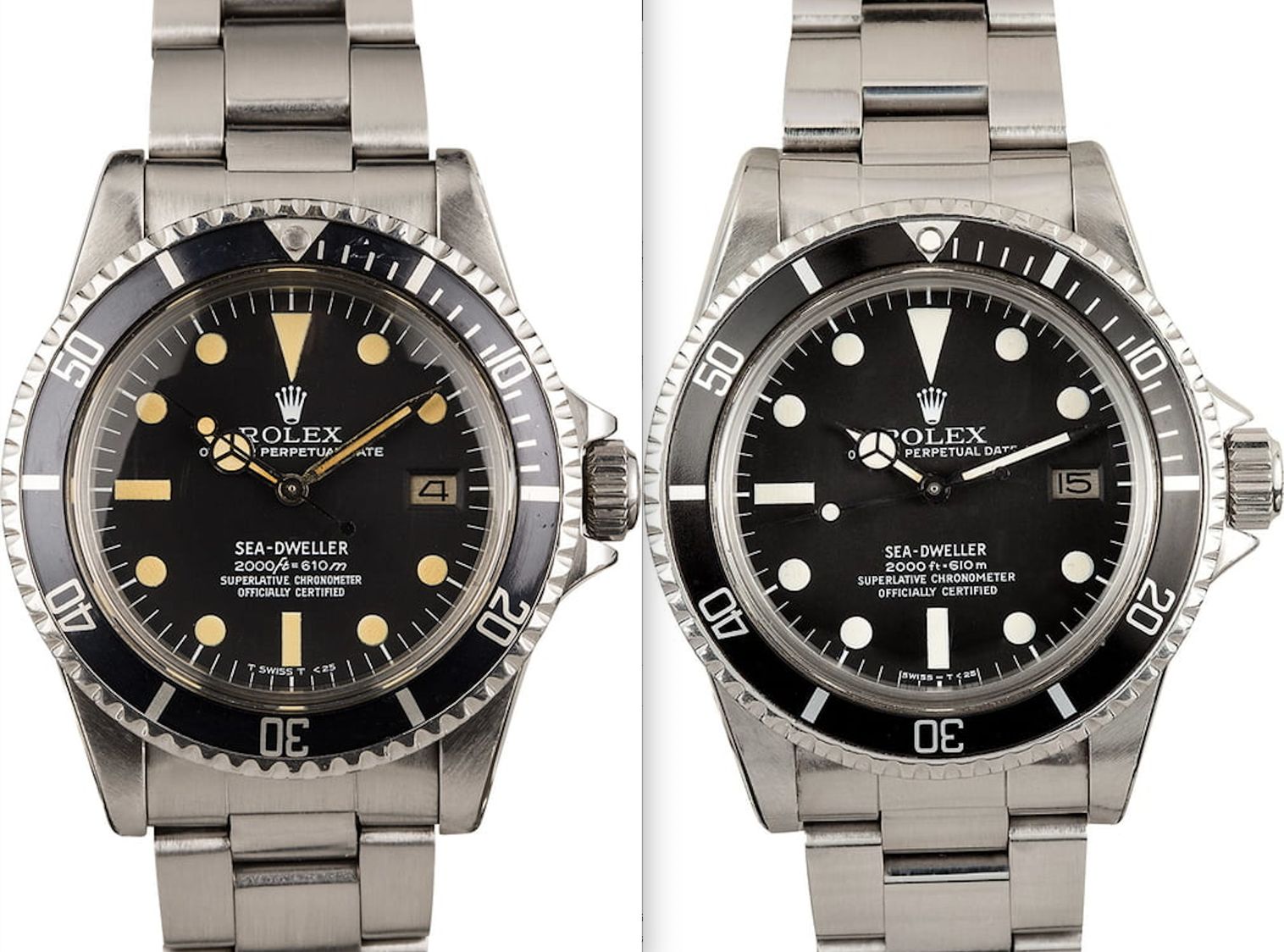
Rolex Sea-Dweller Tritium Dail
This isn’t a fancy name for the dial design, but instead an indicator about an important dial element. Tritium, a luminescent material applied to these early Sea-Dweller watches (along with other Rolex models), is actually radioactive. So in order to designate how much of this potentially dangerous material was being used, Rolex used a code on the dial to indicate it. You can always identify a Tritium dial by the ‘T’ designation at the very bottom, under the six o’clock hour marker.
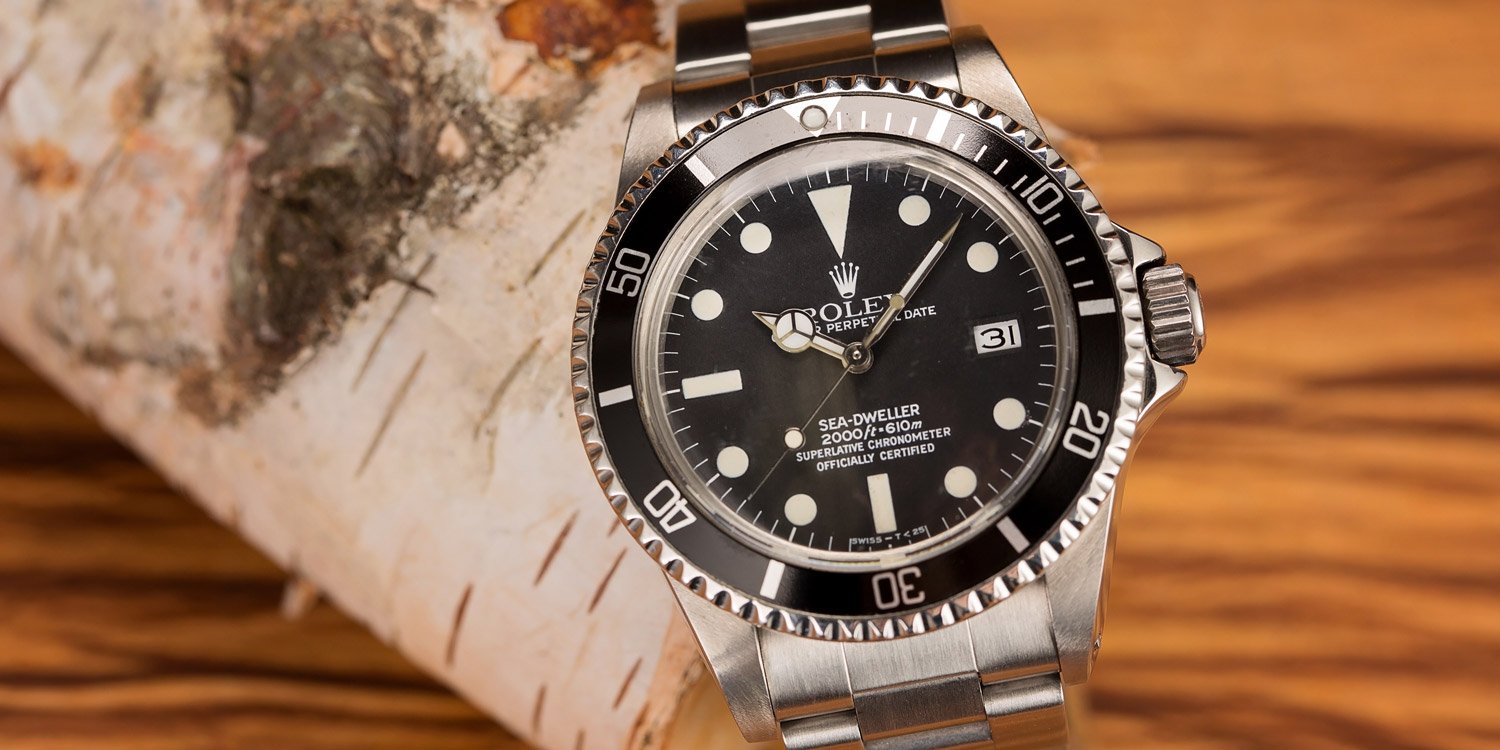
There are two types of Rolex Sea-Dweller Tritium dials:
Swiss-T <25
- This indicates that this watch is Swiss and has levels of tritium that emits less than 25 mCi (aka milliCurie).
T Swiss T <25
- This dial marking indicates that this watch is Swiss and that the level of tritium emits less than 7.5 mCi.
Important note:
If you see ‘SWISS’ or ‘SWISS MADE’ on the dial of a Rolex Sea-Dweller ref. 1665, this indicates that it does not have radioactive luminescent material, but rather photoluminescent LumiNova or Super-LumiNova. Additionally some later-era service dials are marked with ‘T Swiss T <25’ but they actually feature LumiNova on their hour markers. To be clear, ‘SWISS’ can also indicate radium, but this was only used on watches in the early 1960’s, and the Sea-Dweller was not launched until 1967.
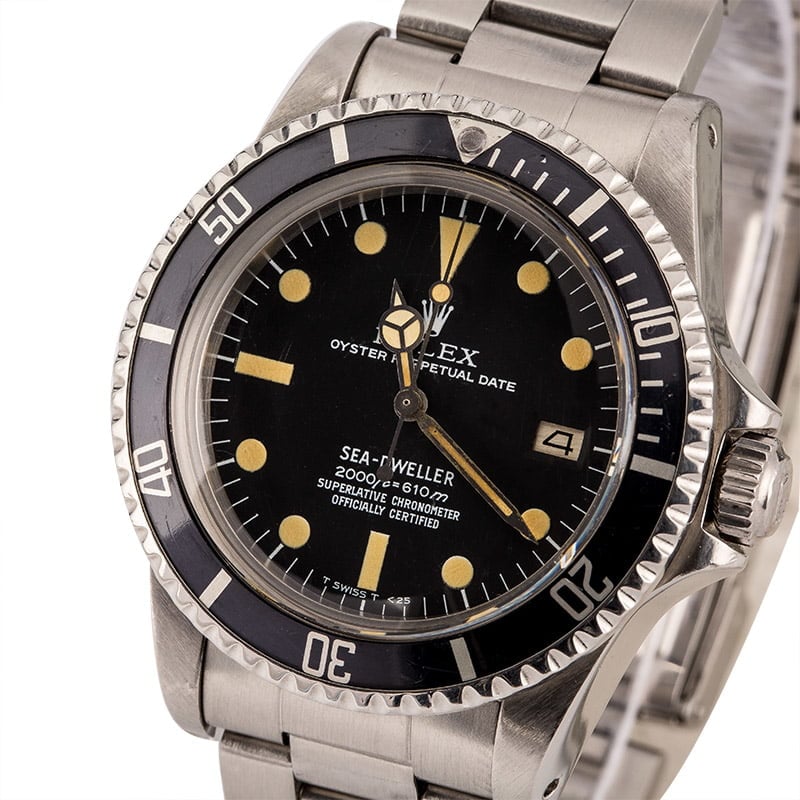
Rolex Sea-Dweller Rail Dial
While there are a lot of different dial variations for the Rolex Sea-Dweller 1665, the Rail Dial is incredibly rare because it was only produced for two years. Between 1977 and 1979, the ref. 1665 could be found with a unique characteristic that involved the ‘Superlative Chronometer’ and ‘Officially Certified’ lines of text that appear above the six o’clock hour marker.
You see, if you look closely at the image above, you’ll notice that the ‘C’ in both ‘Chronometer’ and ‘Certified’ line up almost perfectly. Take a look at the Tritium dial below for comparison and you’ll notice they’re not in line at all. They are almost parallel on this dial (kind of like the rails on a train track), hence the ‘Rail Dial’ nickname. Today, these are incredibly hard to find, both because they are vintage and because so few were ever produced in the first place.
Now, if you keep looking at the six o’clock location in the image above, you’ll notice that this Rail Dial also has a tritium designation. Unlike the watch below, this one features a’ T Swiss T <25′ designation. Consequently, all Rail Dials are actually also Tritium Dials. However, not all Tritium Dials are Rail Dials. The more you know!
